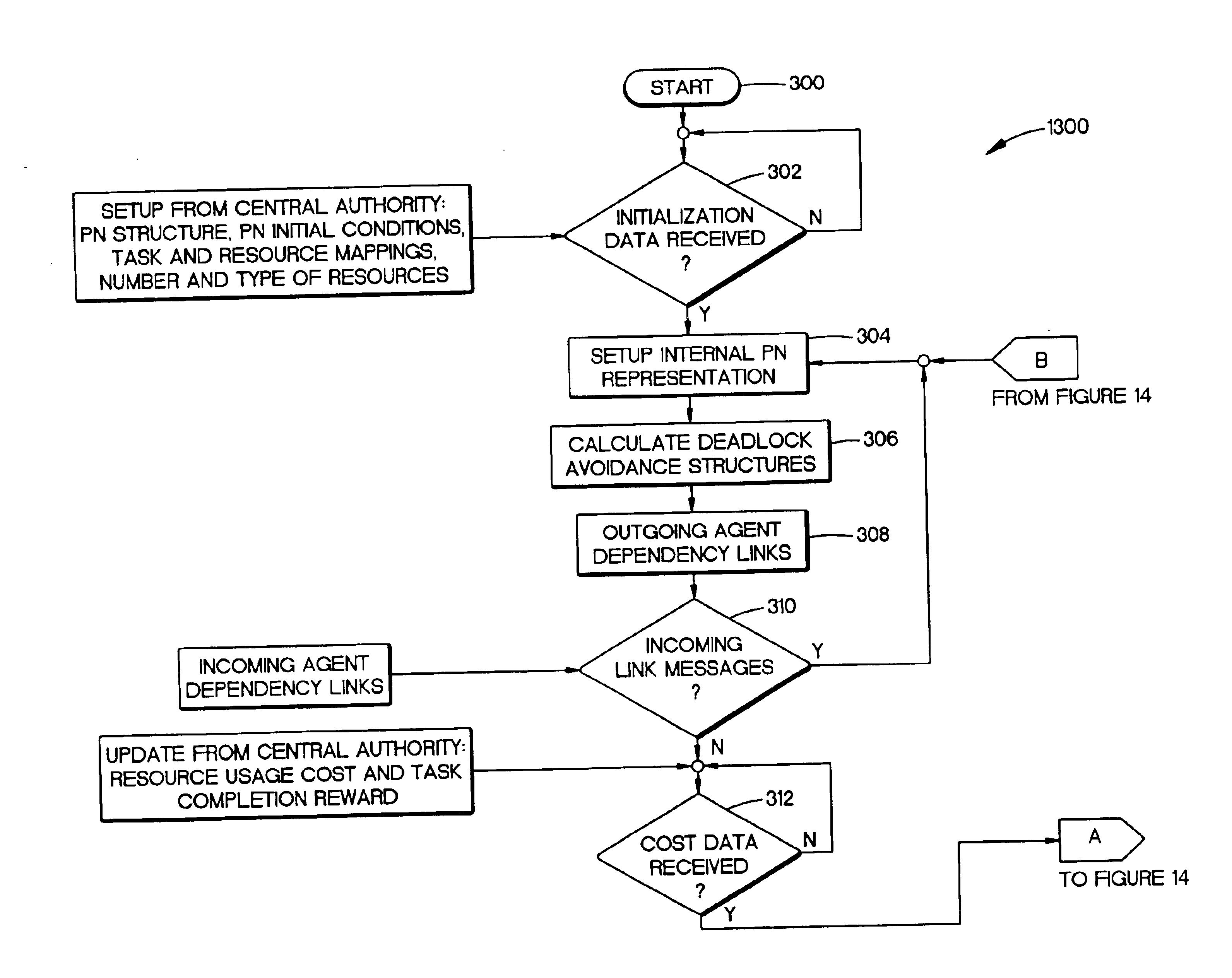Apparatus and method for resource negotiations among autonomous agents
a technology of autonomous agents and agents, applied in the field of autonomous agent agent agent and agent resource negotiation, can solve the problems of centralized solutions to resource allocation problems not always scaling well, lack of overall quality of solutions, and difficulty in adjusting for unforeseen elements in the operating environment or responding to changing conditions
- Summary
- Abstract
- Description
- Claims
- Application Information
AI Technical Summary
Benefits of technology
Problems solved by technology
Method used
Image
Examples
Embodiment Construction
An architecture is presented herein that supports autonomous planning, resource allocation, and task execution for teams of independent entities operating in dynamic, changing environments. A scalable, distributed network of modular team task descriptions and resource dependencies is created and managed in real time. Initially, teams are composed of units possessing resource and / or potential task execution assets. Automatic synthesis techniques are employed to create feasible inter-team links of dependency among tasks and resources. This step provides a framework for goal-directed decision making and task planning by human-managed or cybernetic reasoning systems. New higher level cooperating teams arise as an emergent phenomenon of these processes. The scalability and distributed nature of the architecture allows the network to be dynamically modified as tasks are accomplished, goals shift, and new environmental conditions are encountered. The architecture has a wide range of applic...
PUM
 Login to View More
Login to View More Abstract
Description
Claims
Application Information
 Login to View More
Login to View More - R&D
- Intellectual Property
- Life Sciences
- Materials
- Tech Scout
- Unparalleled Data Quality
- Higher Quality Content
- 60% Fewer Hallucinations
Browse by: Latest US Patents, China's latest patents, Technical Efficacy Thesaurus, Application Domain, Technology Topic, Popular Technical Reports.
© 2025 PatSnap. All rights reserved.Legal|Privacy policy|Modern Slavery Act Transparency Statement|Sitemap|About US| Contact US: help@patsnap.com



